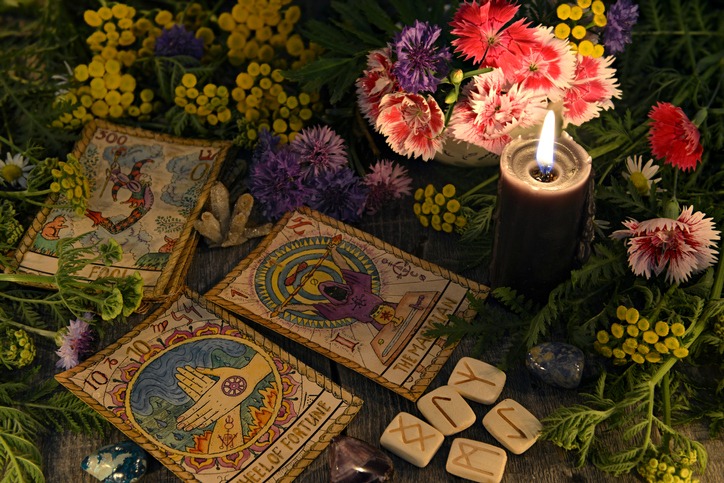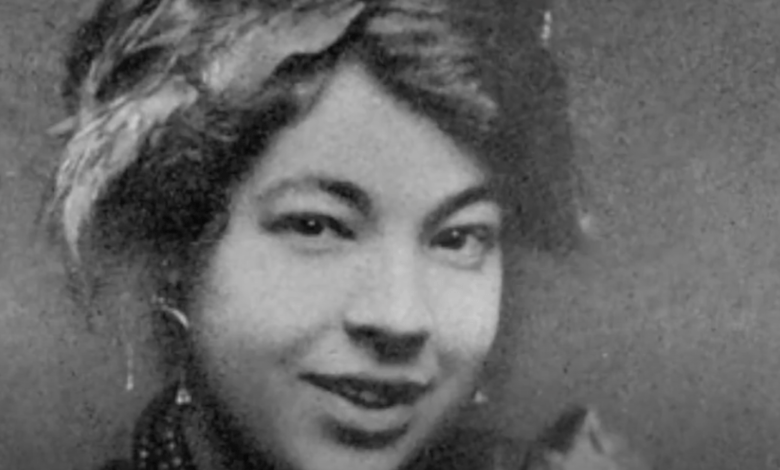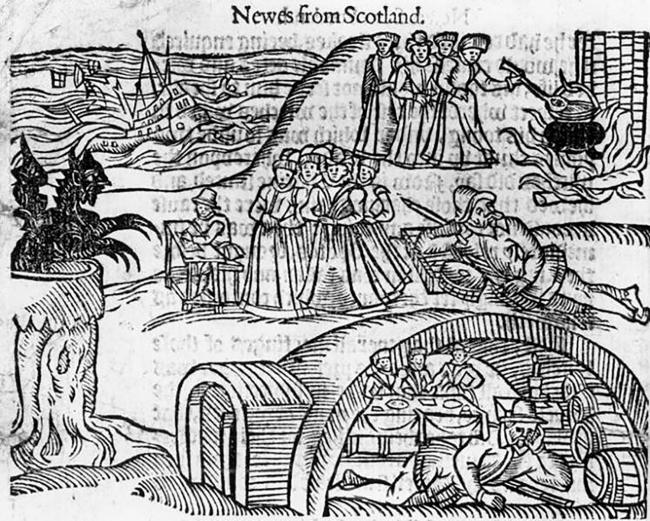Beware: Lesbian Witches!

For many people, the mental image of a witch arises out of a puff of smoke, taking the shape of a Disney villain. Witches: their skin green, warts on their humongous noses, a cackling laugh that echoes through our bones, striking fear through the night. A stereotypical, evil witch is scary because she represents a patriarchal fear: female vengeance. What’s pushed down can, and often does, come up stronger.
Like the exaggerated, warped clown that rocks to-and-fro in the nightmares of those that fear them, witches have been subjected to the same embellished representation. Beyond popular belief, actual witches live by a moral system that takes form in a statement called the Wiccan/Witches Rede. The key rule? “An ye harm none, do what ye will”: do what you want but don’t harm anyone.
Women who step out of line are often represented as witches: the Disney, demonic, one-dimensional type who don’t reflect the real practice of witchcraft. We’re witch-hunted online just for disagreeing with misogyny. Lesbians “step out of line” by the fact of our existence — even without intention — because women are supposed to partner up with a man. Beware!
Capitalizing on commercialism
Maggie Rosen, from the University of New York, recounts a time she went to Salem, a town heavily embedded in the historical persecution of witch-hunted women, with her girlfriend: “We stayed no more than three hours in that tiny town…I was expecting to feel the ground tremble below my feet as I stepped into the graveyard that held so many of the women and “co-conspirators” persecuted for suspicion of witchcraft. Instead, all I felt was the judgement of a nearby tour group as their guide scolded us for listening in without having purchased tickets…I was disturbed by how little of this small town was authentic. Plastic bobble heads of green witches stared back at me as I gazed into the numerous spell shop windows that claimed to be the “real deal.””

Rosen admits how even those of us who have “always felt a particular allure towards mysticism” still often partake in the commercial, contrived portrayal of witchcraft. “The trip left me thinking three things,” she said, “I could now check Salem off my bucket list of places to visit, ‘crap, now we won’t get home until four a.m.’, and why are we capitalizing on centuries of the wrongful persecution and brutal murder of so many women?”
Rosen outlines how the persecution of powerful women still happens today, using Julia Gillard — Australia’s first female prime minister, who was used as a pawn in political tomfoolery — as an example. Rosen points out that when Gillard was elected, “a rally erupted. T-shirts and flyers were distributed with images that depicted Gillard as a witch: an old, haggard, flaming witch on a broomstick. This was a blatant display of misogyny and ageism. Gillard was slandered with pejorative rhetoric such as ‘bitch’ and ‘ditch the witch’.” Gillard isn’t a lesbian but, throughout her term, it was continually implied she was.
The commercial, contrived image of a witch is still used to ‘other’ women who rock the boat, especially lesbians. The ugly figure is upheld as a warning, both literally and metaphorically. Even if the term “witch” isn’t used against women, the witch hunt continues with other derogatory, fear-inducing, scarlet letters in its place.
However, do we have a real connection to actual witchcraft, outside of the stereotypical figure used to silence us and the commercialization of its rich history?
Lesbian witches
Lesbians have a long-running connection to witchcraft. Haven’t you noticed? We still love cats. Whether the lesbian’s persecution or actual engagement with witchcraft came first is a good question. Irene Reti believes that we were witches before it was a death sentence: “it is no accident that lesbian feminists remember, even unconsciously, who our wise and sacred companions are [cats]. We who are not afraid to be called dykes, witches, crones or hags, are also friends of cats.” Nicole Pasulka writes for The Cut, “when women were first organizing [in the 1960s and 1970s]…[lesbians] often looked to female-dominated or goddess-worshipping cultures as models for how to live and thrive outside patriarchal Western society…[witchcraft] featured cats as companions in spiritual matters and in persecution for hundreds of years.”
Dianic Wicca was born out of the second-wave feminist movement and was founded by Zsuzanna Budapest. It “embraces the Goddess but spends little time on her male counterpart,” and has long been associated with lesbianism, while still welcoming any woman. Dianic Wicca focuses on Mother Nature as the “life-giver and life-sustainer.” It promotes the connection and parallels between Mother Nature and women, for example, the act of carrying and birthing life. While most Wiccan paths disallow hexes and curses, Zsuzanna Budapest believes that cursing against those who do wrong by women is perfectly acceptable.
While second-wavers may have embraced the lesbian and female connections to witchcraft and Mother Nature, the connections didn’t start in the 1970s. They didn’t even start with artist and occultist Pamela Coleman Smith, who illustrated the most popular tarot cards still used today: the Rider-Waite-Smith deck, published in 1909. Coleman Smith was a black woman who remained in a companionship with spiritualist Nora Lake for forty years, up until Coleman Smith’s mysterious death. Nope, not even Coleman Smith, with her “orange robes…folk tales and performances,” kicked off witchy lesbianism.

We probably won’t know exactly where the connection started but there is evidence of lesbians being accused of witchcraft early on. Maud Galt was a lesbian accused of witchcraft in 17th century Scotland. She married a man named John Dickie to hide her lesbianism and had a (potentially abusive) relationship with one of their servants, Agnes Mitchell. Galt’s charges were several pages long. Historian Julian Goodare states that Galt’s case “shocked authorities…the idea of witchcraft [was] easier to cope with than [her] lesbianism.”

Perhaps the persecution of witches simply justified the persecution of lesbianism, which takes shape today. In the King James version of the bible, it reads “thou shalt not suffer a witch to live” (Exodus 22:18), which was “a way of life for the Puritans living in New England during the 17th century,” according to Rosen. The bible is also used to justify oppressing women, especially lesbians. A woman who lacks attraction to men is a ripe candidate for vilification, and it didn’t take much for a woman to be accused of witchcraft.
It still doesn’t take a lot for lesbians to be accused of cataclysmic disruption to this day. Lesbians are still killed under the guise of witch-hunting and, even if it doesn’t lead to murder, we’re still globally portrayed as that cackling, Disney-style villain in more subtle, insidious ways for daring to speak up for what’s right.




